Specs and takeaways:
- Name: Brooks Running Catamount 2
- Weight (men’s size 11): 10.6 oz / 300 g
- Stack height: Forefoot – 24mm // Heel – 30 mm // 6mm heel-toe drop
- Sizing: True to size
- Pros: Light and responsive cushioning, sticky traction, durable construction
- Cons: A bit narrow for wider feet, not as breathable as some
- Best for: Everyday trail runner that won’t say no to a race <50K
- Price: $170
Where to buy
Every trail runner has that one running shoe we can go to again and again. It may not be the lightest, grippiest or most recent thing out there but it just works. For me, that was the original Catamount from Brooks. Well now, they’ve released the highly anticipated sequel to one of that beloved trail running shoe – the Brooks Running Catamount 2.
Now, I know what you’re thinking. How can a shoe be so impressive that it deserves a sequel? Well, my friends, let me enlighten you. The Brooks Catamount 2 has taken everything we loved about its predecessor and cranked it up to eleven. It’s like the first shoe went on a self-improvement spree and came back stronger, faster, and, dare I say, sexier. Here’s my in-depth review of the Brooks Running Catamount 2.
Brooks Catamount 2 Outsole
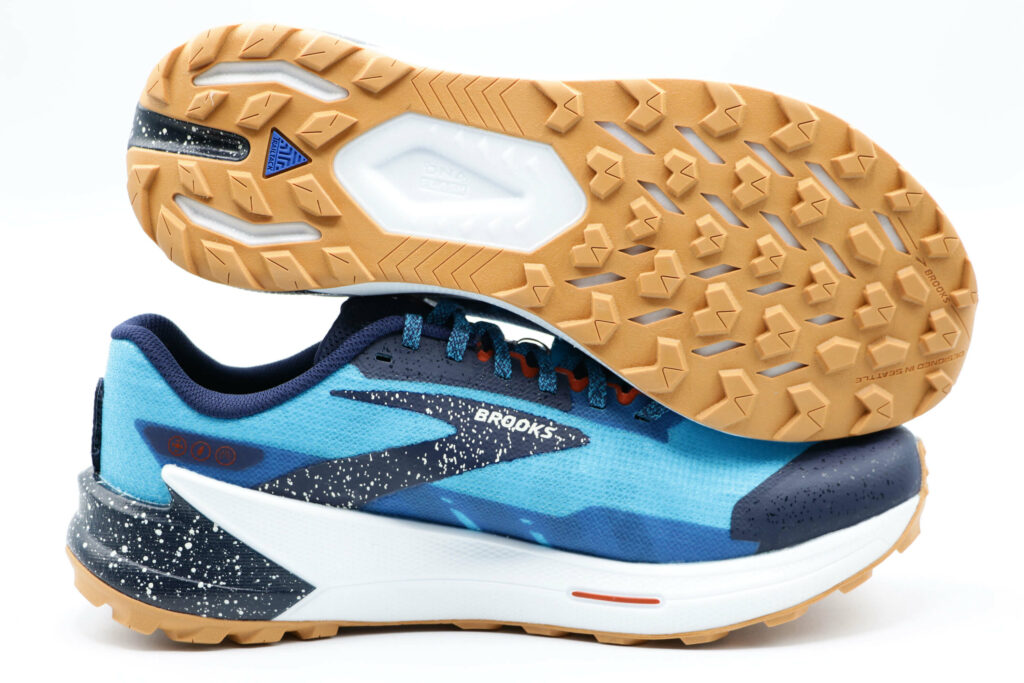
Sporting a complete layout redesign from the original Catamount, the outsole of the Brooks Catamount 2 is made from a single piece of Brooks’ TrailTack rubber. There is a cutaway in the shape of an elongated hexagon between the heel and the forefoot as well as cutouts on each side and at the center-back of the heel and several in the forefoot. The 4mm – besting the Catamount 1 by a whopping 1mm – deep lugs of the Catamount 2 are arranged in rear of the outsole to accommodate downhill traction while the forefoot lugs are designed to bring traction to uphill running – and the forefoot lugs look suspiciously like the top portion of the 47th problem of Euclid.
How’d the outsole of the Catamount 2 work for me? First, durability is very good. Trail Tack rubber as an outsole material hold up to punishment very well. In the 75+ miles in the Catamount 2 I’ve run, probably 4 of them have been on paved surfaces as well and as a potential road to trail shoe (which I’ll touch on later), the outsole looks in fantastic condition.
Of course, if the durability is good but the traction is bad, who cares? Fortunately, as its predecessor, I think the Catamount 2 brings a lot of stickiness to the trail. While there are certainly deeper lugs to be found, these are a good depth for most dry trails and rocky terrain verging into technical terrain that we find here in Colorado. For the more technical trail I ran on, the Catamount 2 brings that confidence on off-camber terrain as well as the steep stuff.
Brooks Catamount 2 Midsole
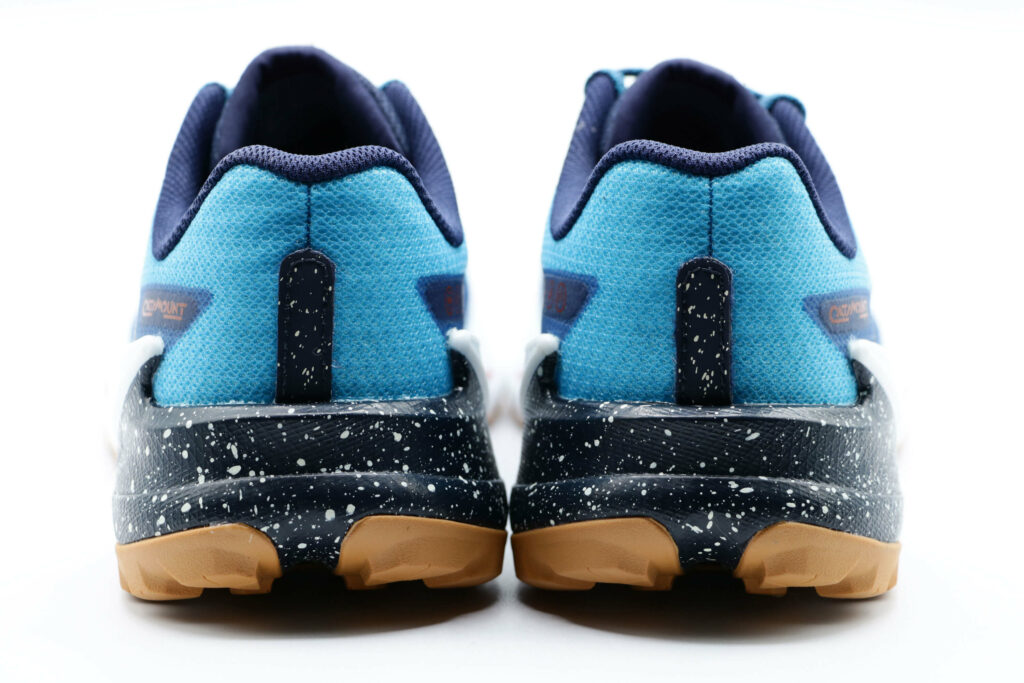
The midsole of the Brooks Catamount 2 is made from a nitrogen-infused DNA FLASH foam. Embedded within lies the Brooks SkyVault propulsion plate. The stack height in the heel of the shoe is 30mm with 24mm in the forefoot for an overall drop of 6mm. The midsole is also slightly rockered, which helps to promote a more efficient gait. Climbing up from the midsole material and into the realm of the upper is a wing-like extension of the DNA Flash midsole which is clearly a play toward more foot stability in the upper of the shoe – a bit we’ll touch on in a moment.
In the first version of the Catamount, the simplicity of the foam and great ground feel was one of my favorite aspects. However, for that shoe being considered a trail racer, I didn’t quite feel the pop that I wanted despite my love for it. This time, the Brooks Catamount 2 feels like it wants to get up and go more. Is it the Catamount 2’s SkyVault plate? Perhaps a bit but, as I’ve also seen in several other reviews, the SkyVault plate gives the Catamount more protection than thrust. This isn’t a bad thing by any means, but the segmented plate just isn’t quite as stiff as it could be.
As for those midsole foam wings – which again, I’ll talk about more in the upper section below – I found they did a great job of working with the upper to create more foot stability, especially when variable and off-camber terrain comes to the party. The running experience in this shoe is definitely enhanced by the updated DNA FLASH midsole which has a very similar firmness from its predecessor but with more material giddy-up.
Brooks Catamount 2 Upper
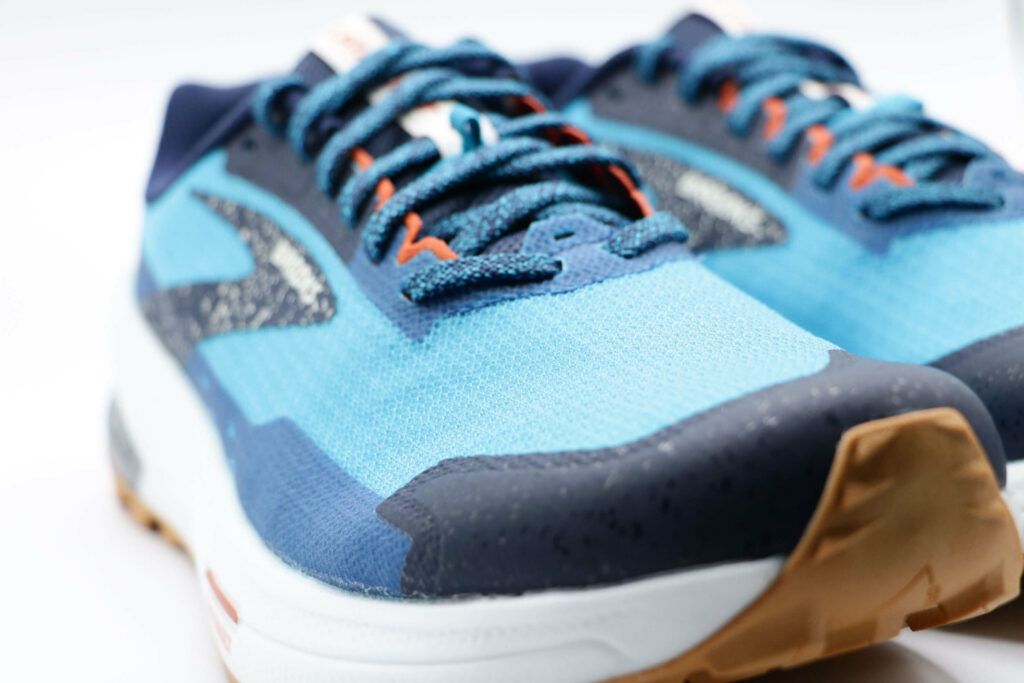
Moving into the upper of the Brooks Catamount 2 we find a single piece, dual-layered air mesh. The outer layer is made from a water and abrasion-resistant mesh and the inner layer is made from a soft, quick-dry mesh. The tongue is gusseted with a lightweight, stretchy mesh and in a sleeve over the midfoot. Overlaying the upper and incorporating the shoe’s branding into the mix are 3D printed structural elements. Additionally, there is a fairly robust toe cap – which is a touch more beefy that the original Brooks Catamount – which melds into a mud guard rand wrapping the bottom portion of the upper.
The eyelets keep laces laying flat and are constructed from the same, durable material as the toe. At the bottom-of-the-tongue / top-of-the-vamp Brooks uses a flat gaiter clip which is matched by a velcro gaiter closure on the heel.
While I really liked the sleek simplicity of the upper in the first Catamount trail shoe, I will readily admit that it was far more suited to buttery singletrack than technical, ankle-breaker terrain. This time, the Catamount 2’s upper brings some legit foot security to make trail performance and fast running off the smooth stuff and on much more varied trail.
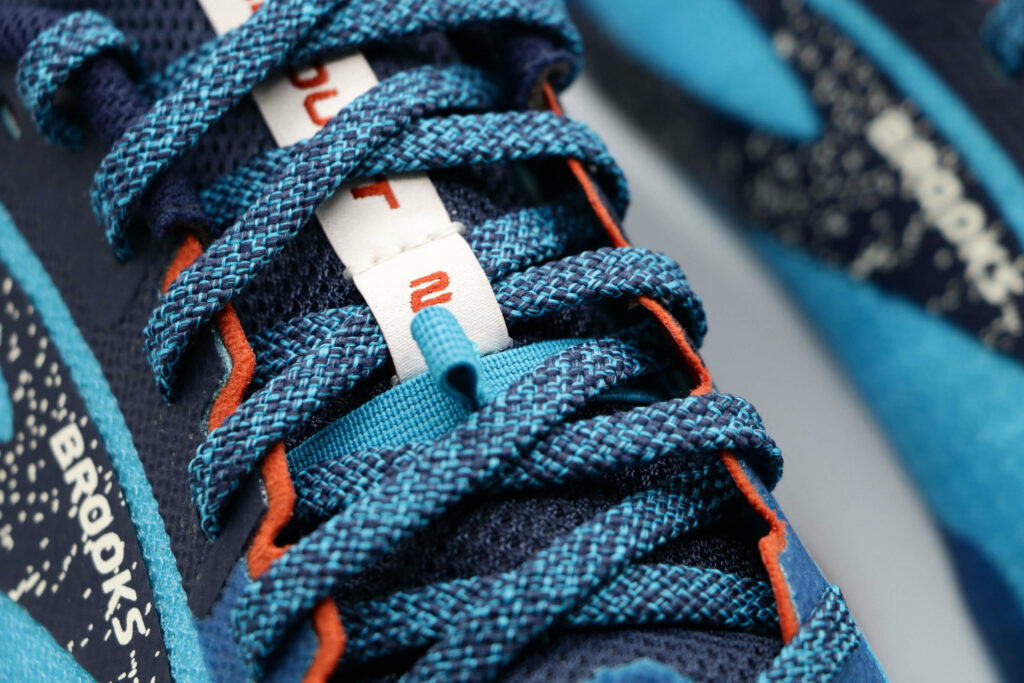
The mesh of the shoe is certainly durable although, it its effort to bring the toughness, it may be a bit less breathable than some people with warm-running feet would want. That said, the hold that the mesh and support structure combination provides kept my foot comfortably locked-in place without being pinched. A firmly medium amount of foam around the collar and backing the tongue means comfort without an overabundance of unnecessary material.
Brooks Catamount 2 Fit
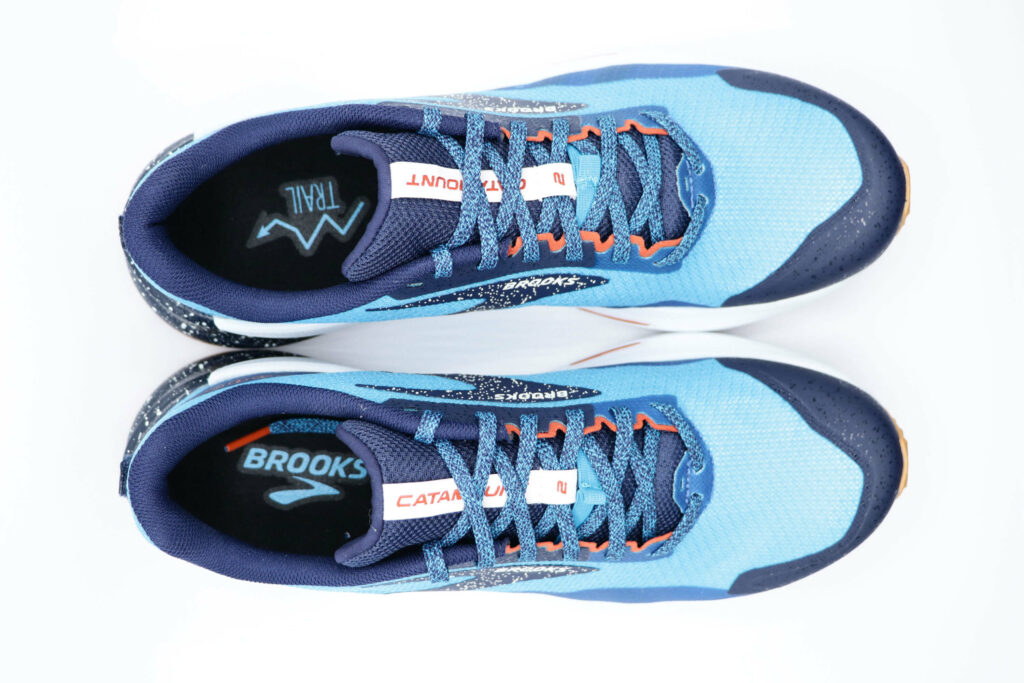
First, the sizing of the Brooks Running Catamount 2 is true to size (in my men’s 11). I also felt the width dead on for my very average width foot. For those with feet that tend toward being a bit wider than average, you may find a small bit closed in in the forefoot.
Beginning with the specific fit areas at the front of the shoe, the toe box comes to a bit of a point but not much, and certainly not enough to feel pinched, even when descending down some of the more gnarly trails near me – which are plentiful. Through the midfoot, I found the laces and tongue combination to work well without needing to hammer down on the top of the foot to hot it in place. Finally, the heel cup – thanks partially to the aforementioned wings – held my foot very well.
Being that the fit of a shoe is something it often difficult to speak about in a truly objective sense, I’m curious what others have experienced. If you’ve run in the Brooks Catamount 2 for the trail running miles of late, tell us in the comments how you liked (or didn’t) the fit.
Brooks Catamount 2 Ride
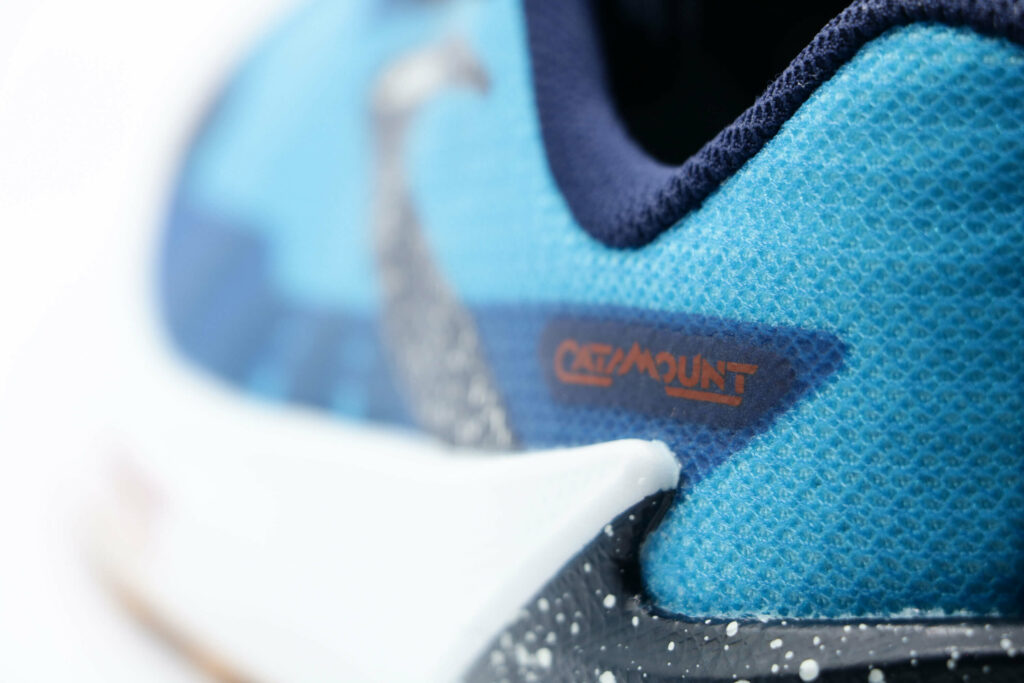
While I’ve run in Brooks trail running shoes plenty in the past, my favorite before now was the original Brooks Catamount. It was/is a shoe that is light, simply and fun to run in. However, it lacked the side-to-side stability of some more complete trail shoes. However, between the reimagined upper and the marriage of the midsole to the foot-holding structure of the shoe, the Catamount 2 is a fantastic update by Brooks.
On smooth trails I found it as fun as it’s predecessor without having to hit the brakes when things get technical. On those more technical, rocky and variable trails, this shoe is a lot of fun to rip in all directions.
Where else though? Road. Yeah, I know I mentioned it above and not much since but the I definitely didn’t hate the Brooks Catamount 2 as just a touch of a road shoe hybrid. While I only ran on a bit of pavement – mostly because I don’t want to trash trail-oriented lugs of asphalt – the pop and fun of the shoe translated very well.
Am I saying it’s the one of the best trail running shoes on the market? Not really. It’s light, but not super light. It has good traction, but not otherworldly. But here’s the thing, the Catamount 2 could be that one shoe which you know is going to be consistent and durable no matter what (even with a bit of short road running thrown in on the way to the trail).
Brooks Catamount 2 Overall
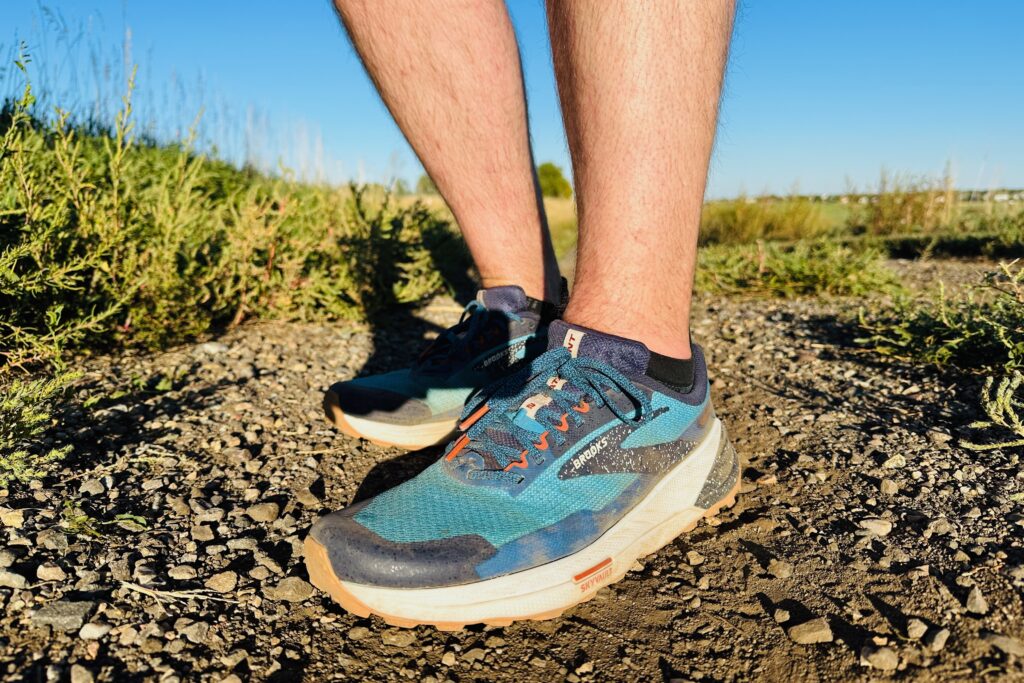
As I mentioned at the outset of this review, the first version of this shoe was one of my favorite, go-to trail running shoes. That said, I think the Brooks Catamount 2 is a great shoe, especially for those looking for a new trail running shoe that can show up for some speed as a pair of racing shoes.
At $170 I do think they’re quite pricey. That said, if you’re a Brooks fan – and especially someone who’s going to put in a lot of miles on this shoe, the second iteration in the Catamount line is going to be worth the price.
For me, this is a go anywhere trail shoe with a DNA midsole and underfoot protection that belies the relatively shallow lugs making it a lightweight trail shoe that will be ready to go, even when it’s been replaced.
Where to buy
View More: Brooks Catamount 2, Brooks Catamount 2 Review, Brooks Running, Brooks Trail Running Shoes, Running shoe review, running shoes, trail running shoes

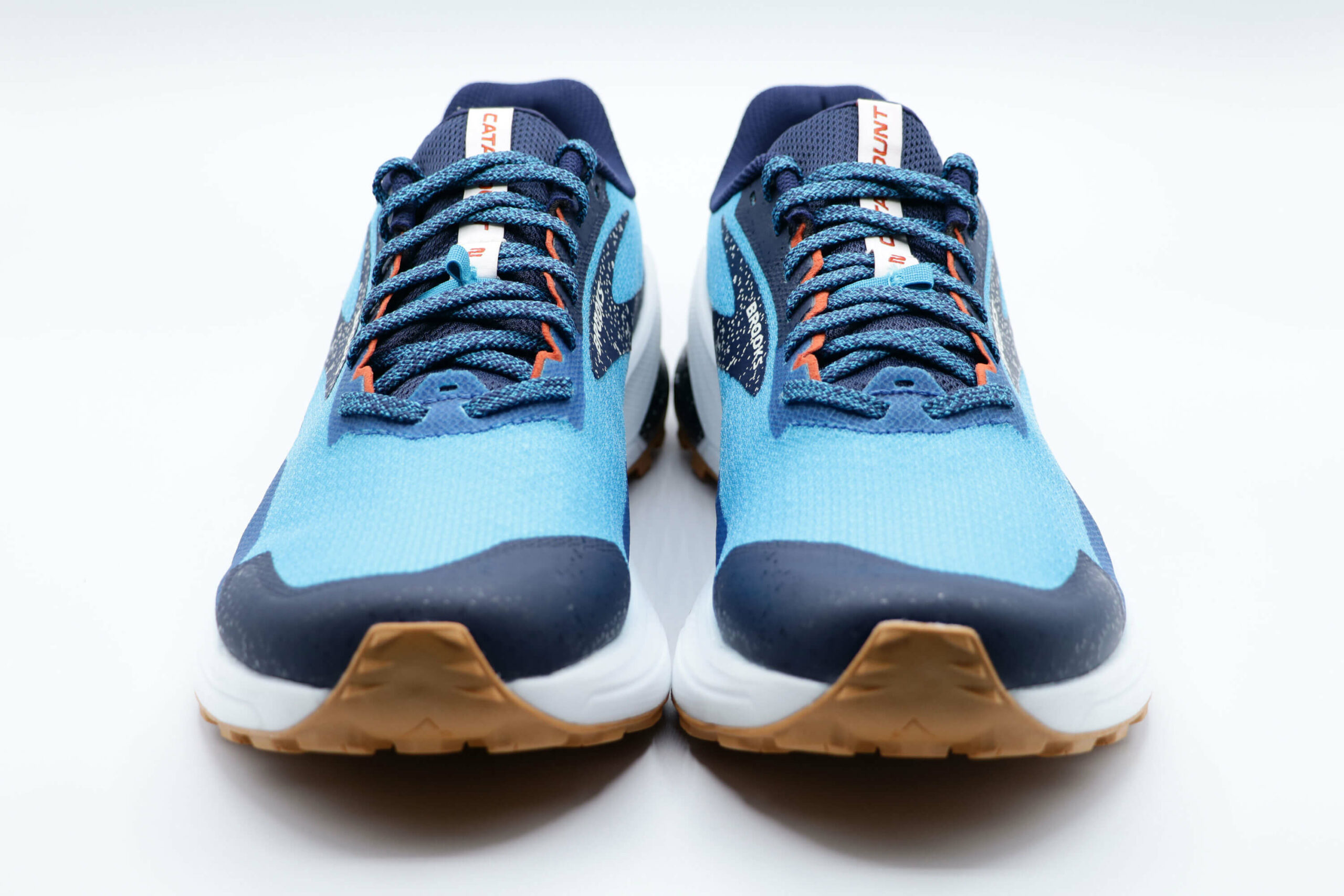
0 Comments